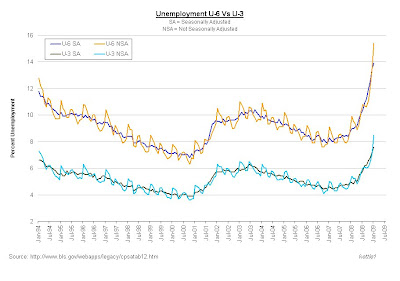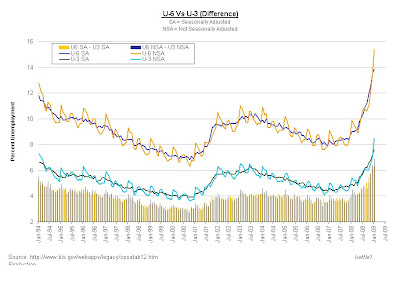Note a small nitpick, I am not a chemist, but a Chemical Engineer. Big difference.
Wired-o-Nomics: Why Is the Real Jobless Number So Elusive?
Nick Andrews is a chemist by day and recreational economist by weekend. He’s been crunching numbers on American economic indicators for years, and in March devised a method to compare current woes with those of previous eras. Andrews collected U3 unemployment data from the early 1900s to today, and then adjusted it for compatibility (methodology changed in 1948 and again in 1994). Starting in 1994, when U6 information was first collected the way it still is today, he found a constant relation of 1.77 between U3 and U6 figures. Using this relationship, Andrews analyzed overall unemployment (U6) from the Great Depression and from today.





